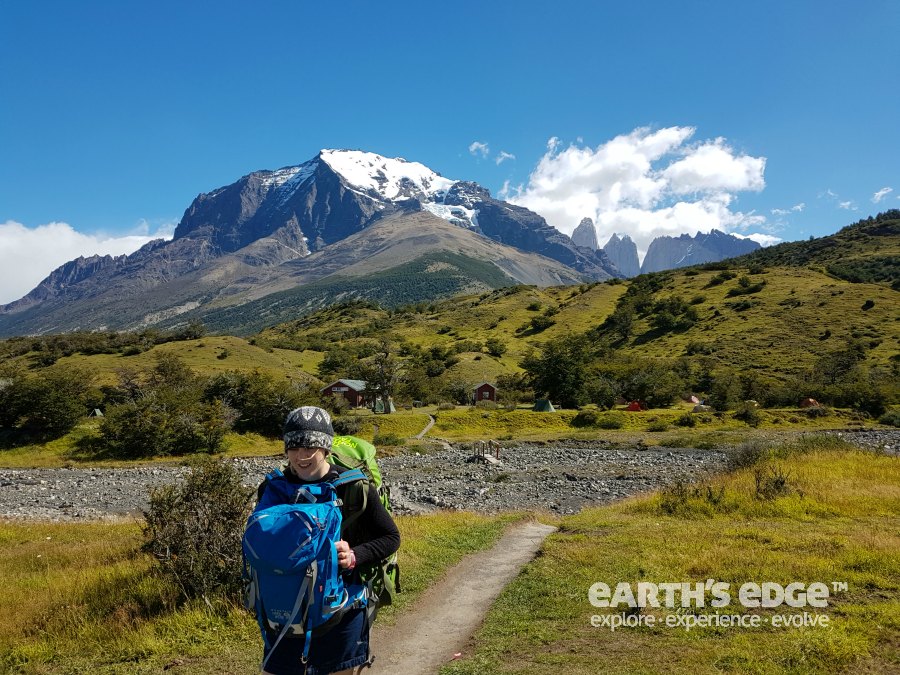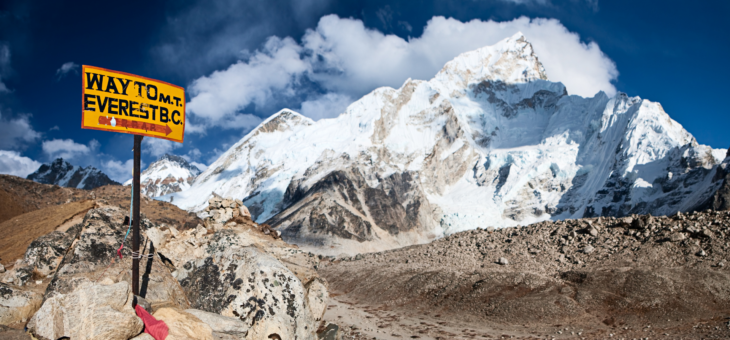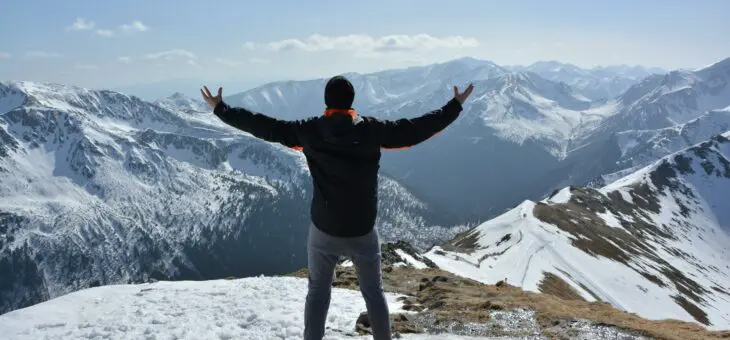Lastminute.com, we found out Rosie had to delay her departure to Patagonia which meant I was going to spend the first few days trekking in Patagonia by myself. Although I love my wife dearly, this was great news as it meant I was going to get to spend some time trekking solo which is always great for the soul! I decided to take on the Huemul circuit – a remote four-day trek in Los Glaciers National Park – in Argentina. My journey to the small town of El Chaltén took exactly 24 hours, flying from Dublin to El Calafate via Frankfurt. The last three hours I spent in a bus and I was lucky enough to get to see the entire Fitzroy massif including Cerro Torre and Cerro Fitzroy on the drive in, which apparently had been covered in cloud for the previous week.
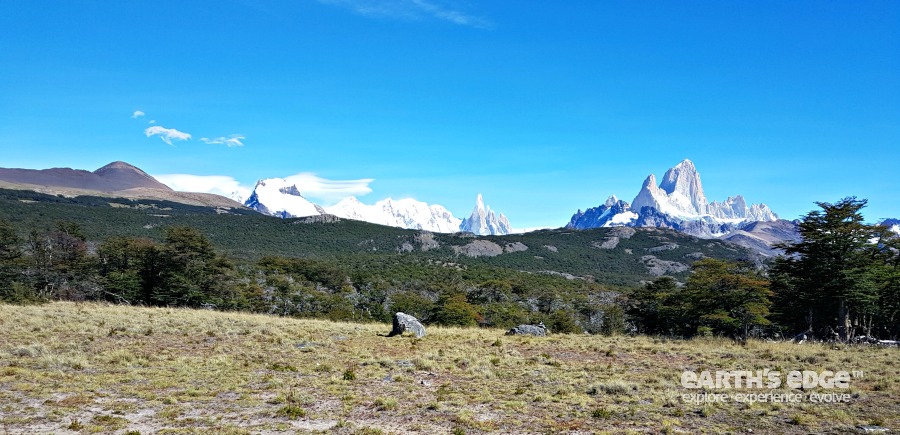
Once in El Chaltén I met my local contact there who had arranged food, a harness, a stove and a tent for me to take on the trek. I also got a good brief about the circuit which is poorly marked in places. This turned out to be great as I went slightly awry at times and had I not had previous warning I could be still out there now! Funnily enough Argentinians give directions like the Irish “If you reach the water you have gone too far and need to turn around”!
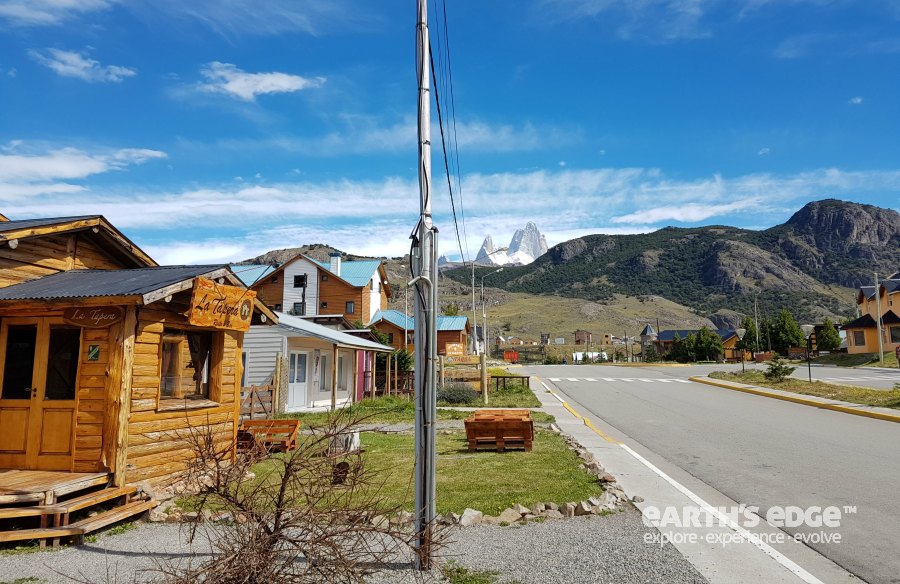
The following morning, I got moving in glorious sunshine. Because you need to carry all your own gear, it’s not nearly as popular as other parts of Los Glaciares National Park and therefore the route is not that obvious. There are also two significant river crossings on suspended cables with harnesses! I only met six people throughout my three days on the circuit. I decided to complete in three days rather than four, so I could be back in El Chaltén to meet Rosie for Valentine’s day (what a dreamboat!!!) so I had three tough days of trekking ahead.
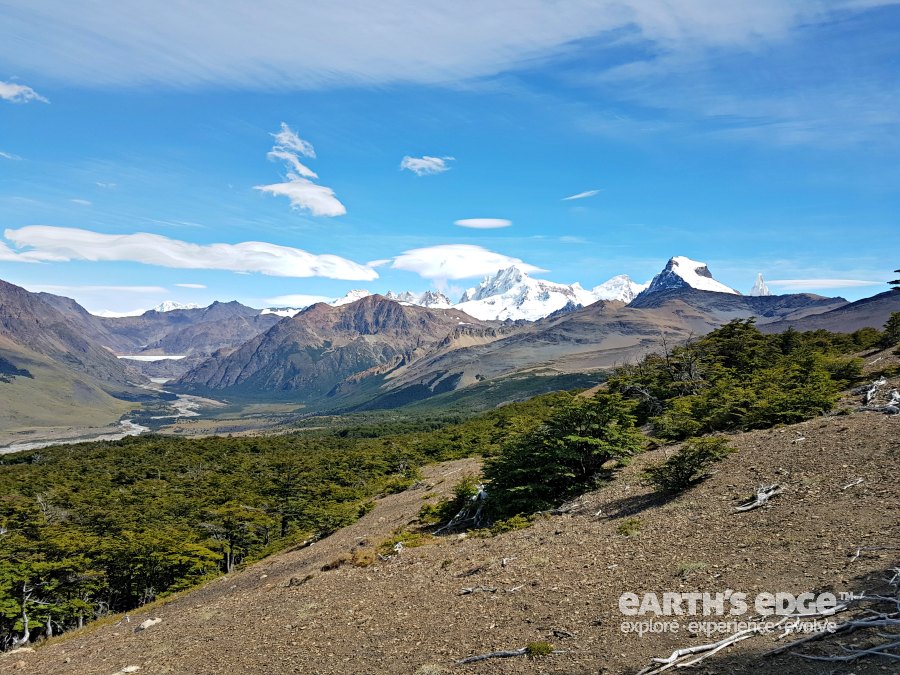
The first day was action packed, as I crossed Tunel River using the steel cable which was pretty exhilarating. From there, I hiked for another two hours across the Tunel glacier to the Bivy spot below the Paso Del Viento (‘Windy Pass’). About an hour before I got there, the wind picked up and it started lashing rain. The winds coming off the Southern Ice Cap in Patagonia are stronger than anything I have experienced before. This meant I had to stay in my tent all the time as I was a bit worried that without my big arse inside it would blow away!
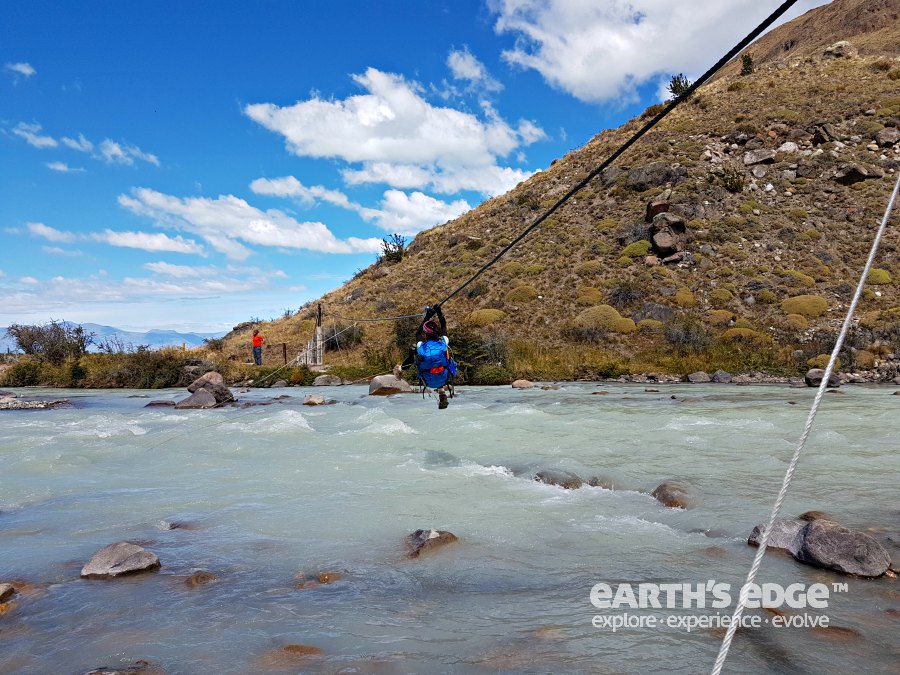
As the wind was buckling the tent poles and bouncing them off my head all night, I decided to make an early start on day two as I was not getting much sleep anyway. It took around two hours to reach the pass but the views of the Viedma glacier and the Southern Patagonian Ice Cap are out of this world. For most of my second day, I was walking alone alongside the glacier which was special. Finally, I climbed up and over the Huemul pass and dropped down to my second campsite which sat in a grove of Lenga trees. The Lenga is beautiful native species in Patagonia which grow up to 30 metres in height and 1.5 metres in diameter.
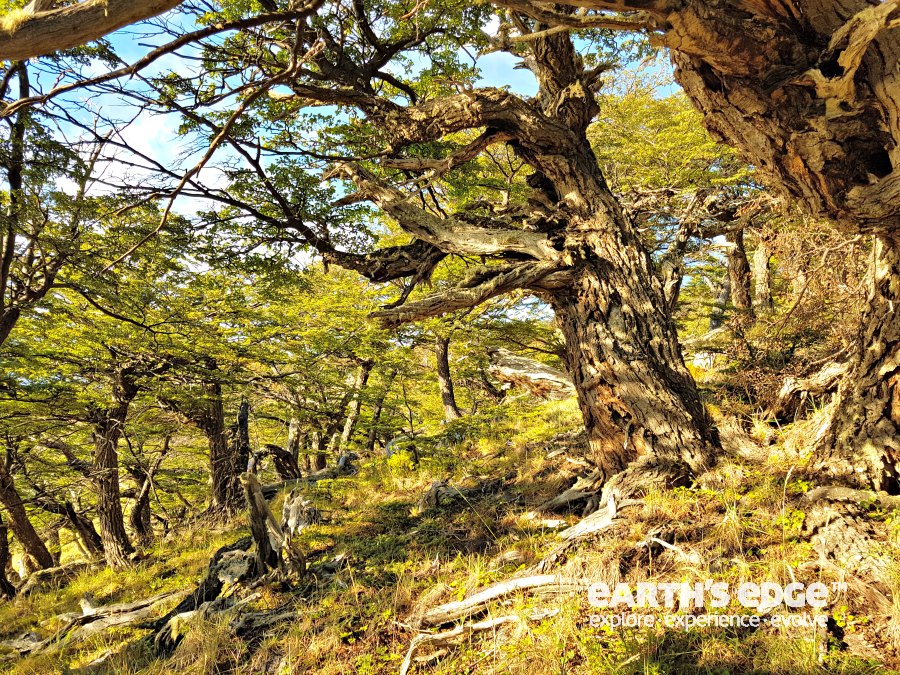
When guiding, and traveling with clients I do a really good job packing to ensure I have everything I need. On personal trips or recces, I spend about 20 minutes firing things into a bag with a “sure it’ll be grand” attitude and it definitely came back to bite me in Patagonia! I brought a heavy pair of Meindl boots on this trip, which are great for the boggy hills in Ireland, but not the best for long days on hard ground. Climbing big mountains teaches you to push through physical and mental pain barriers, so when the soles of my feet were quite sore on the morning of the second day, I just ignored them and kept pushing on. On the morning of the third day, I was in a lot of pain and although my feet looked perfect, I had developed six blisters underneath the big calluses on my feet.
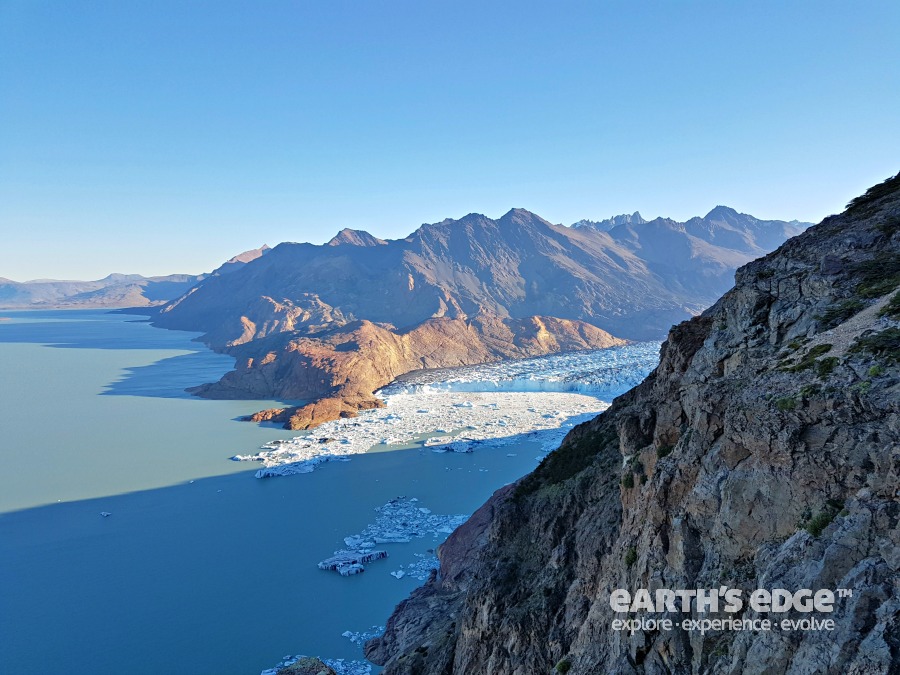
This made the last day of the circuit quite painful, but luckily, I found some anti-inflammatories in my bag so that helped a lot! The last day on circuit is really cool as you descend from the Huemul pass and then walk out to the trailhead over rolling to grassland. Throughout South America, these grasslands are referred to as Pampas, which is translated from the Quechua pampa, meaning “plain”.
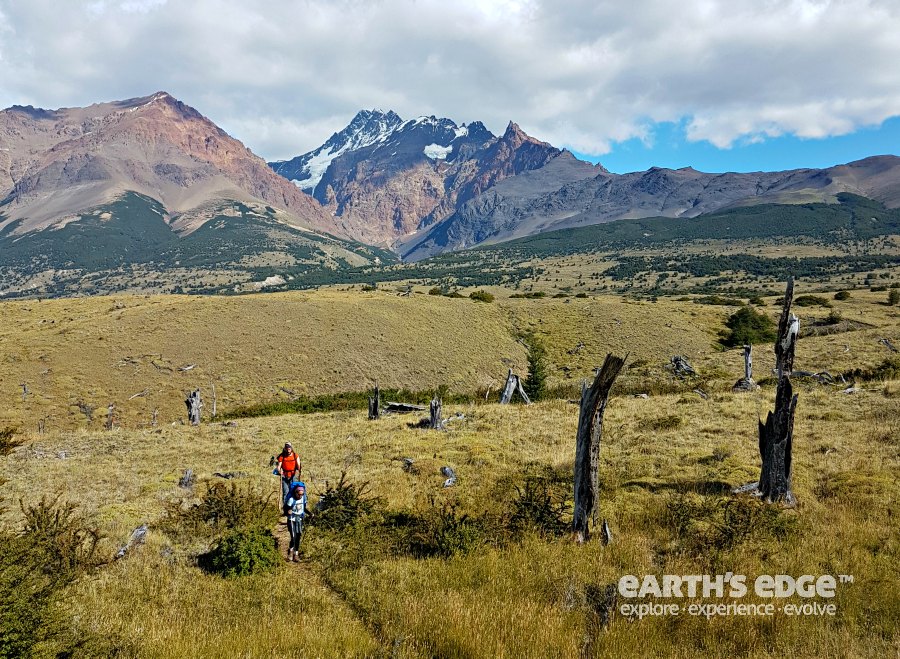
When I got back to town, it was really embarrassing to explain to Rosie what I did to my feet! I’m putting it down as a lesson learned, that despite your experience it’s never good to be complacent. Once back in El Chaltén, I was able to source more anti-inflammatories for the rest of the trek and we went out for some tasty Valentine’s Day Argentinian steak and wine which was a great aid to my recuperation!
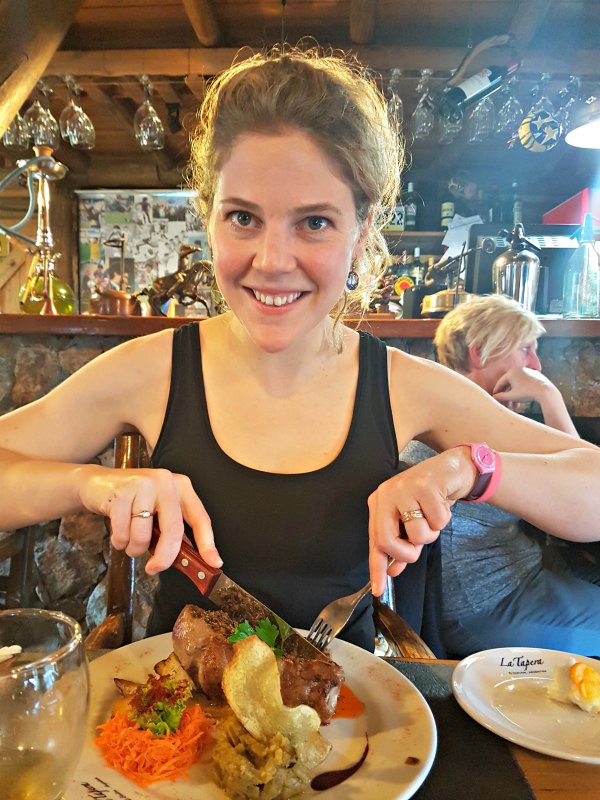
The following day, we got a ride to Rio Eléctrico and then hiked for about two hours to a refuge at Piedra Del Frailie, a beautiful cabin in the woods at the base of the Paso del Cuadrado which we planned to climb to the next day. We also met up with Barby and Juany – two really great Argentinians we shared the trail with. Juany, an experienced climber ,who had previously summited Cerro Fitzroy, explained all the different routes and history of the climbing in the region. It was first climbed by Lionel Terray and Guido Magnone in 1952, two very talented French climbers who were also part of the first ascents of Annapurna and Malaku in Nepal. It’s incredible to think back to what these guys were doing almost 70 years ago.
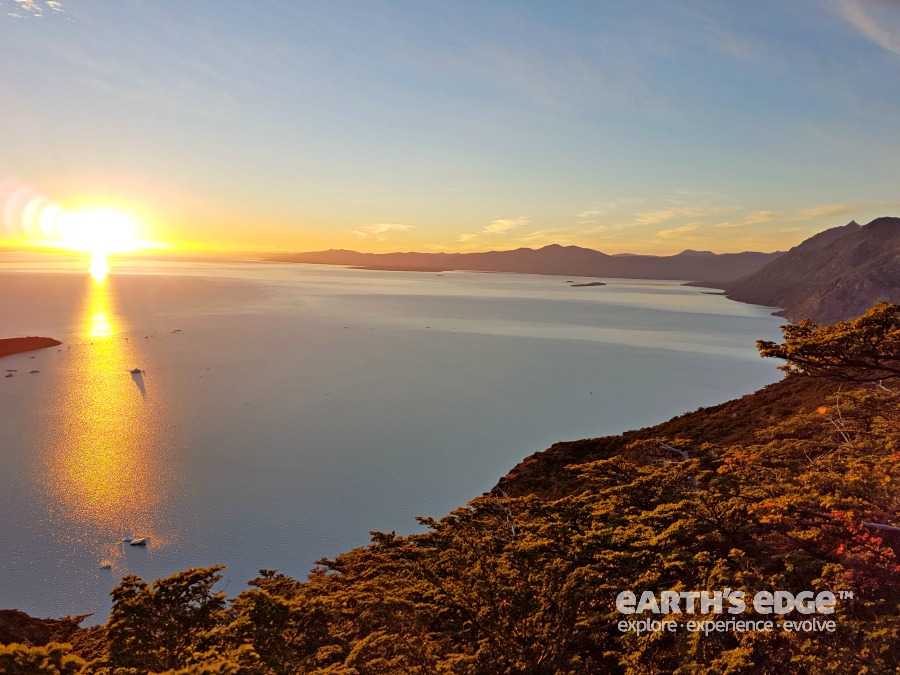
We spent the next couple of days trekking around the front end of the park and visited Laguna de los Tres, which really is one of the most beautiful places for trekking in Patagonia.
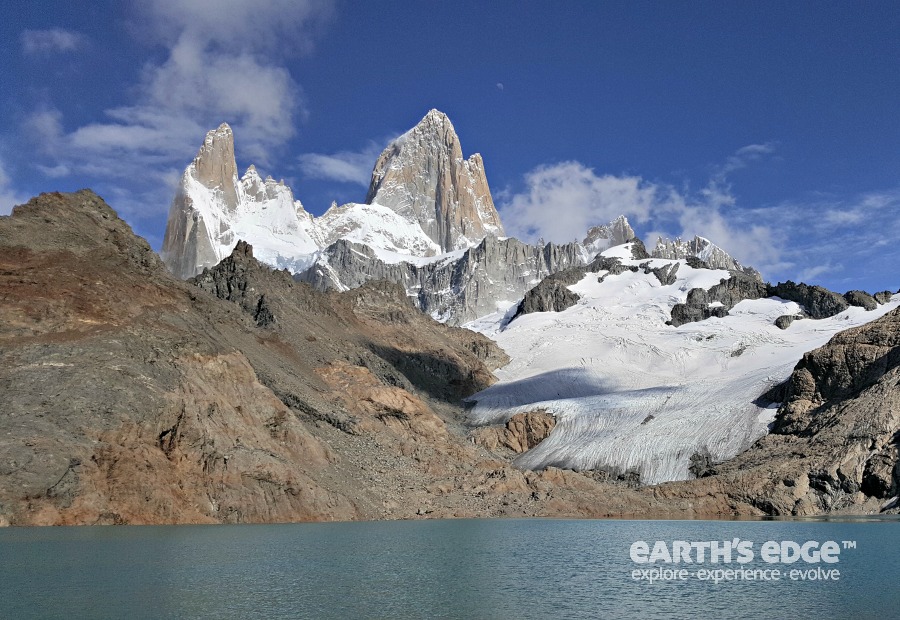
With heavy hearts, we left Argentina bound for Chile travelling from El Chaltén to Puerto Natales with an overnight stop in El Calafate which unexpectedly provided the best tacos we’d ever experienced, washed down with some local ales. I slept most of the way to Chile but it was needed as that night we went out for some gorgeous local food and also got to attend the Reel Rock Banff Film Festival in Natales. They showed a number of great shorts, the best being the ‘Dodo’s Delight’. If you have not seen it, check it out – it’s about four climbers (including Belgian-Irish climber Sean Villanueva O’Driscoll) sailing to Baffin Island on a climbing expedition – it’s hilarious!
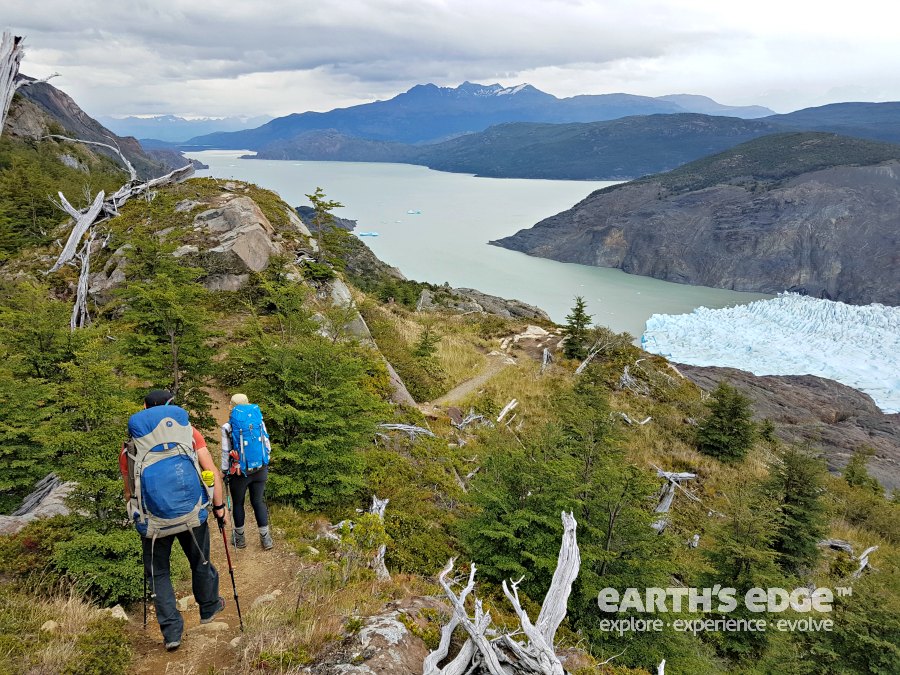
We left Puerto Natales in the morning for the park – Torres del Paine. Staying just outside the park for our first night, we decided to go horse riding, western style, in Rio Serrano which was beautiful. It was a four-hour ride to a massive waterfall with a number of deep river crossings on horseback, where I nearly managed to keep my feet dry only to succumb to Coyote’s bad judgement at the last river. My horse Coyote, (pronouned ‘Coy-o-tay’ for that Chilean flourish) was a bit of a bad egg as he refused to do anything he was asked and was also pretty clumsy over any ground that wasn’t completely flat, but we had a chat about it and resolved our differences, deciding I should just do what he said all the time.
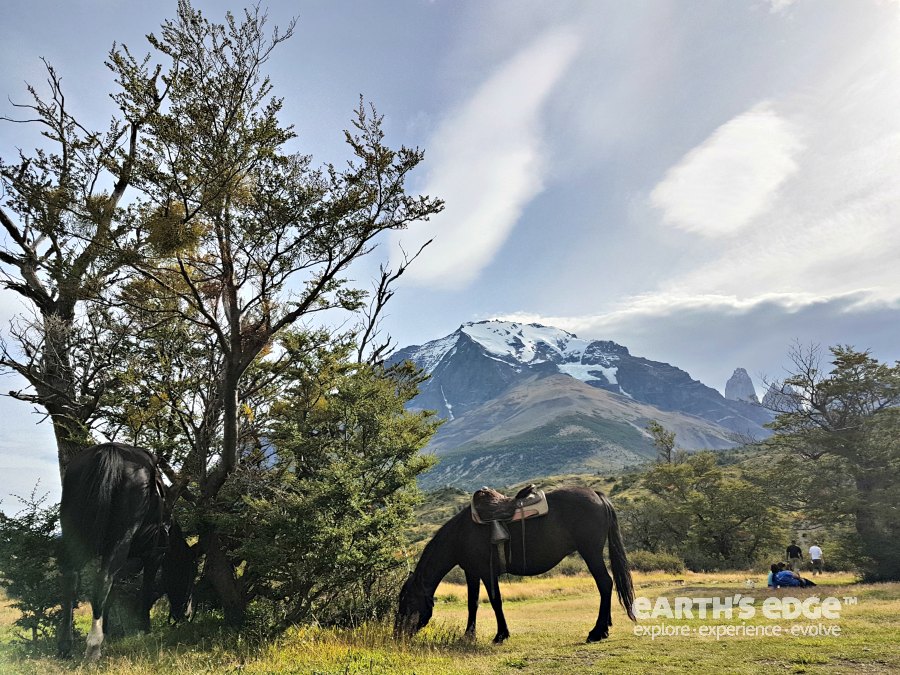
The next day, we got started on our W circuit in Torres Del Paine. Despite it being high season, the trails really weren’t that busy. We spent the first night in Paso and then traversed around to Paine Grande, where we were able to catch a boat to Campamento Pehoé where a friendly armadillo tried repeatedly to get into our tent for a bit of trail mix! We had a bit of rain that evening but in the morning, the clouds had lifted and we were rewarded with stunning views of the towers.
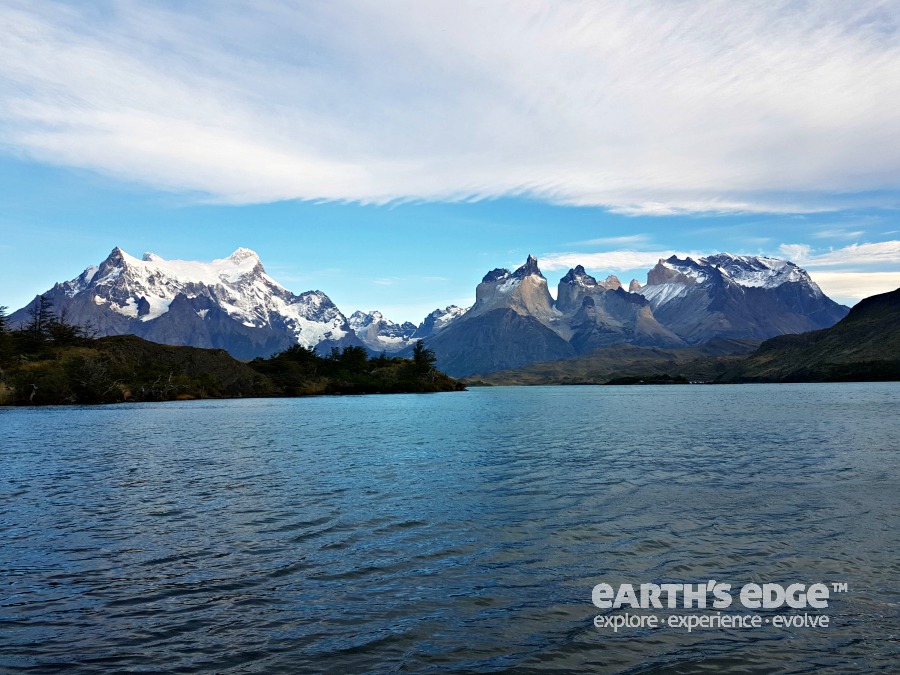
From Pehoé, we hopped on the boat back to Paine Grande and trekked to Campamento Italiano and then up the French Valley, a steep but really interesting hike by the Rio Francés climbing on rocks and tree roots. We spotted a local fox family playing in the sun in Paine Grande in the morning and had temperatures in the mid-twenties all day! That evening, we reached Cuernos and managed a super quick dip in Lago Nordenskjold. We weren’t quite sure of the rules regarding this so made sure we were well hidden! But we were on our holidays and according to Rosie you have to go swimming on holiday!! We followed that up with a bottle of Malbec looking out on the mineral rich lake as the sun set.
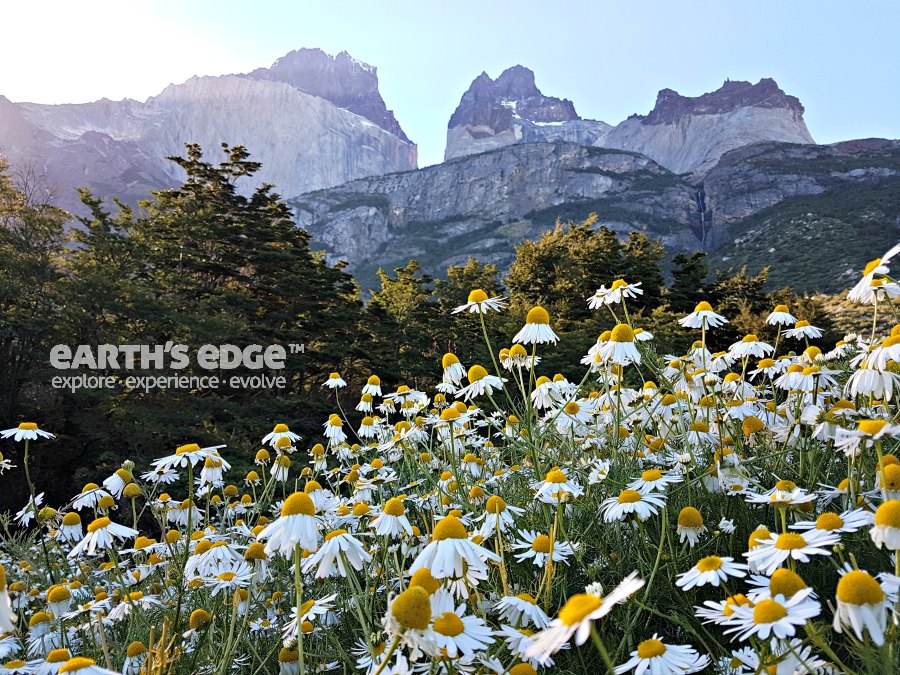
From Cuernos we trekked up to the Bader valley, a smaller lesser travelled valley in the park. There is no recognised camp there so you have to carry up all your own equipment and food, but we had the place to ourselves for 24 hours which made it extra special. You can ascend the Bader valley right up to the centre of the massif which offers stunning panoramic views. There may also have been a sneaky dip in the glacial lake up there!
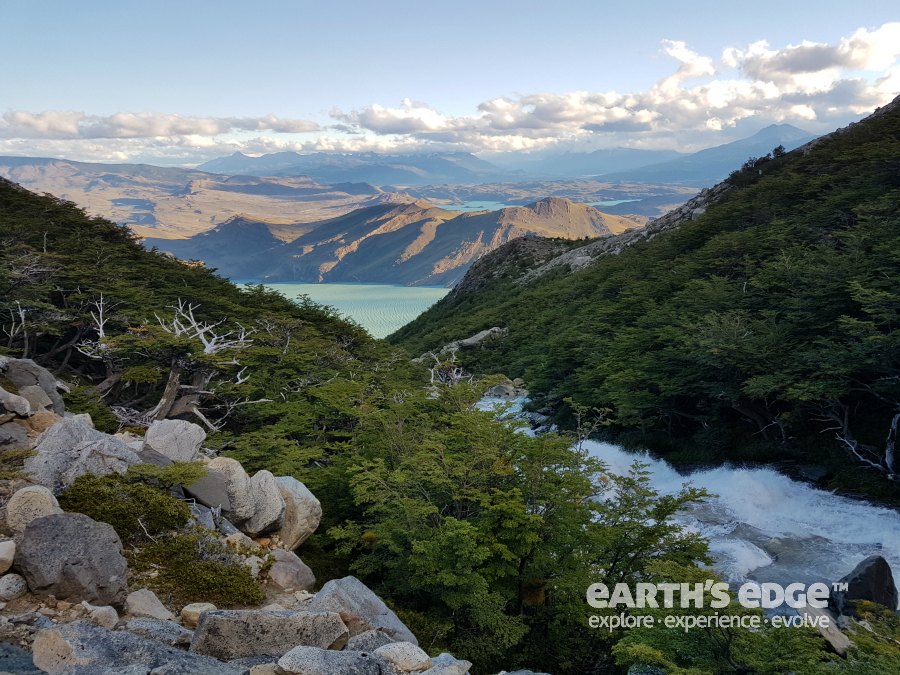
The weather, the morning we ascended the Bader valley was very wet but that afternoon and the following day when we trekked to Campamento las Torres, it was perfect. The views on the route to Torres are picture-perfect and although the campsite in Torres is a little busier than other places in the park, due to it being the main entrance, it’s still beautiful.
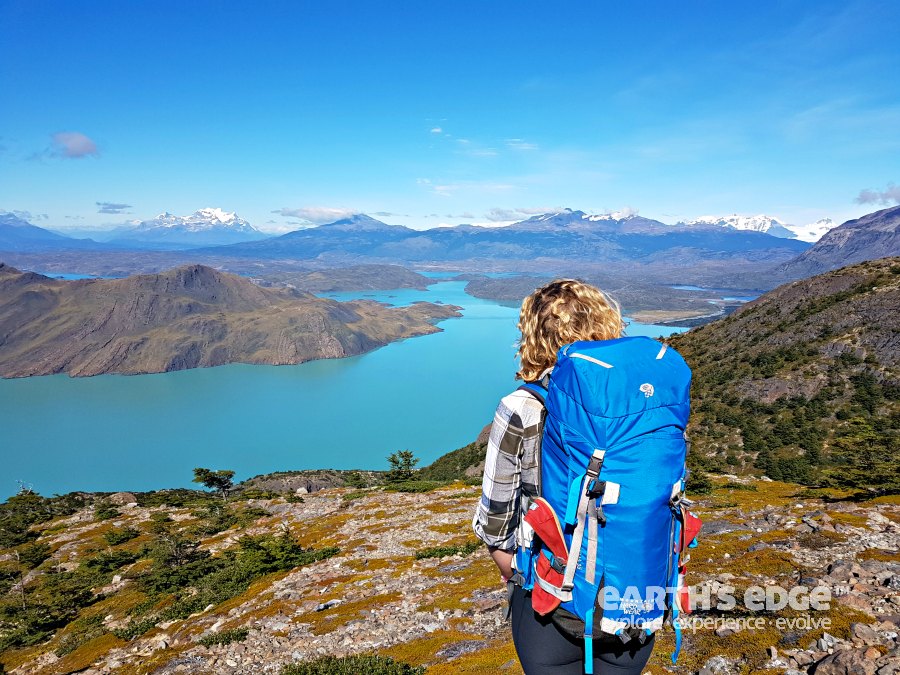
For our last day of trekking, we hiked up to the Towers in the Torres valley. It’s a long hike that went through another beautiful campsite called Chileno and also had a wide variety of terrain. Standing at the base of the towers was a great way to finish our trek in Patagonia. After a big feed in Torres we took the bus back to El Calafate and flew out the next day.
Our trip to Patagonia was beyond expectations and was the perfect combination of challenge and relaxation. We have just launched the itinerary for Earth’s Edge’s first Patagonia trek. It’s a 17 day trek, taking in the best of both regions of Patagonia and is running in March 2018. For more information visit – https://www.earths-edge.com/expedition/patagonia-trek/. We are also running a Patagonia info talk @7pm on Tuesday March 21st in the Great Outdoors Dublin store. To register click here
Jam.
